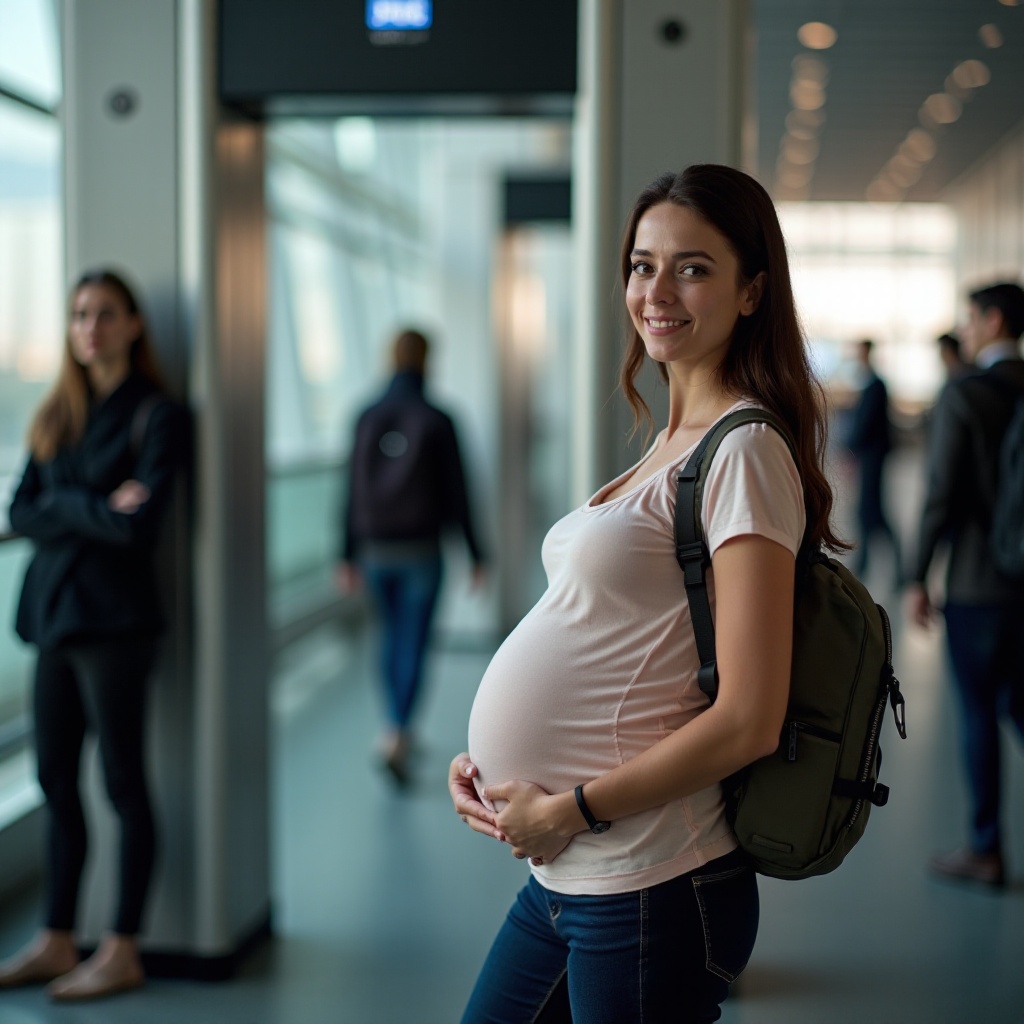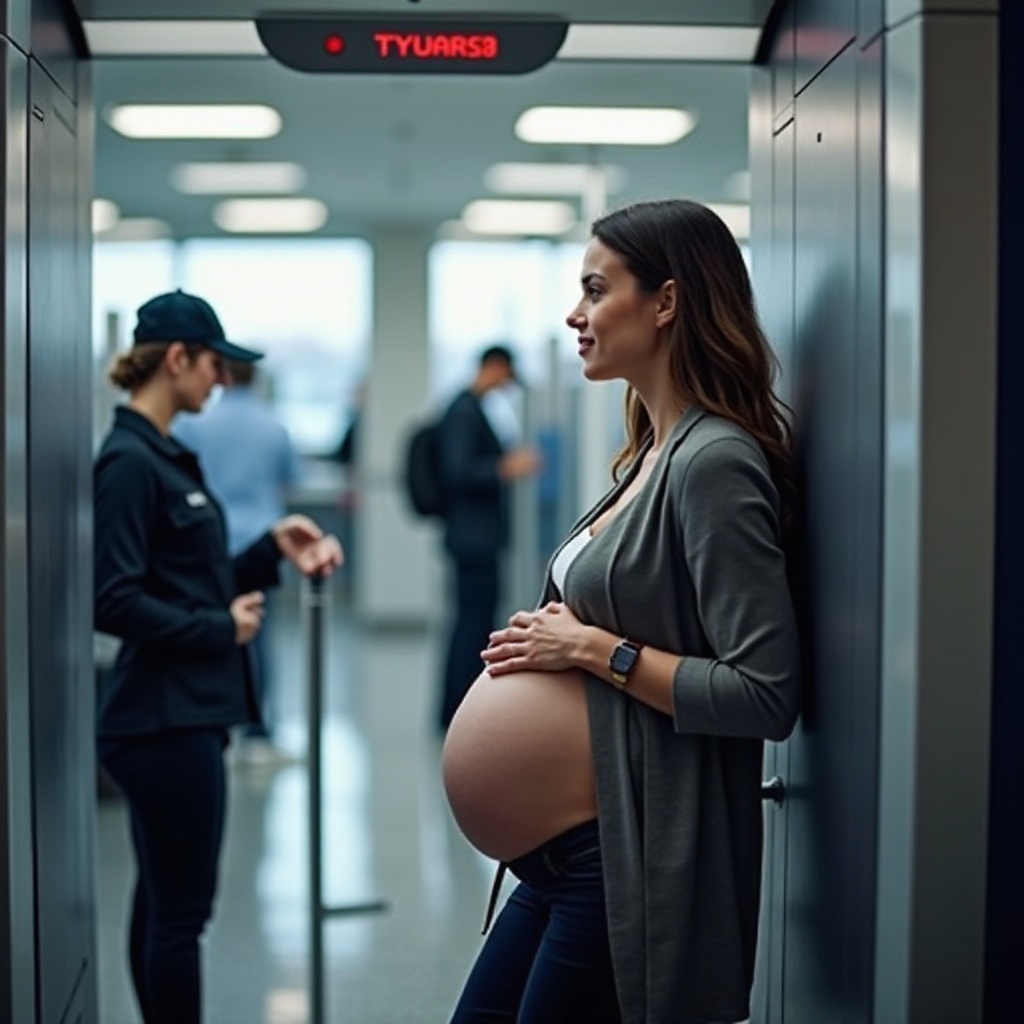Introduction
Pregnancy comes with its fair share of concerns, and air travel during this time is no exception. One common worry among pregnant travelers is the safety of airport security scanners. With so many myths and pieces of conflicting information circulating, it’s important to get clear, factual answers. This blog aims to shed light on the workings of airport security scanners, their safety for pregnant women, and tips to make your journey smoother.

Understanding Airport Security Scanners
To address safety concerns, it’s essential to first understand how airport security scanners operate.
Types of Scanners
There are two primary types of scanners used in airport security: metal detectors (walk-through scanners) and advanced imaging technology (AIT) scanners. Metal detectors use magnetic fields to detect metallic objects, while AIT scanners, including millimeter-wave and backscatter X-ray scanners, provide detailed images of the body to identify hidden objects.
How Scanners Work
Metal detectors create an electromagnetic field that interacts with metallic items, producing a signal when such items are present. On the other hand, AIT scanners emit low-energy waves that reflect off the body to form an image. Millimeter-wave scanners emit waves that pass through clothing and reflect off the body, creating a detailed image. Backscatter X-ray scanners use low-energy X-rays, which reflect off various materials to produce an image.

Safety of Airport Security Scanners for Pregnant Women
Now that we understand the types and workings of airport security scanners, we can address their safety, particularly for pregnant women.
Radiation Levels and Everyday Exposures
The radiation levels associated with airport scanners have been a significant point of concern. However, the radiation levels from both metal detectors and AIT scanners are extremely low. For instance, the millimeter-wave scanners use non-ionizing radiation, which doesn’t carry enough energy to ionize atoms or molecules. Backscatter X-ray scanners use ionizing radiation but at an extremely low level, much lower than other common sources, such as the Sun and even natural background radiation.
Research and Health Organization Guidelines
Research and guidelines from health organizations have consistently shown that the radiation levels from airport security scanners pose no significant risk. The American College of Obstetricians and Gynecologists has stated that the radiation dose from a backscatter X-ray scanner is significantly less than the dose from a dental X-ray or even a flight itself. The U.S. Transportation Security Administration (TSA) also affirms that these scanners are safe for all passengers, including pregnant women.
Common Myths and Misconceptions
Despite reassurance from experts, myths and misconceptions about airport security scanners persist.
Debunking Myths
One common myth is that all scanners emit high levels of radiation. As discussed, the radiation from airport scanners is minimal. Another myth is that these scanners can harm the developing fetus. However, scientific data and health organization guidelines indicate that the levels of radiation are too low to cause any damage.
Facts from Experts
Experts emphasize that the radiation dose from a security scan is approximately equivalent to the radiation received while flying at cruising altitude for a few minutes. The U.S. Food and Drug Administration (FDA) supports this by stating that the risk from this small dose is negligible.
Tips for Pregnant Travelers
Even with reassurance, some pregnant travelers may wish to take extra precautions. Here are some practical tips:
Reducing Scanner Use
Consider minimizing the number of times you pass through a security scanner. Arrange your trip to reduce the number of connecting flights.
Requesting Alternative Screening
Pregnant women can request alternative screening methods, such as a physical pat-down, instead of going through the scanners. This option is available at most airports and is recognized as safe.
Other Traveling Tips
- Stay Hydrated: Drink plenty of water before, during, and after your flight.
- Walk Around: Take regular walks around the airport and during the flight to keep your blood circulating.
- Wear Comfortable Clothing: Opt for loose clothing and comfortable shoes.
- Keep Snacks Handy: Carry healthy snacks to maintain your energy levels.

Conclusion
Traveling while pregnant doesn’t have to be stressful when you have the right information at your disposal. Airport security scanners, including both metal detectors and AIT scanners, are generally safe for pregnant women. The myths and misconceptions can be dispelled with facts and expert guidelines. By taking a few precautionary steps, such as requesting alternative screening and following practical travel tips, you can ensure a smooth and safe travel experience.
Frequently Asked Questions
Is it safe to go through airport scanners while pregnant?
Yes, it is generally safe. The radiation levels from both metal detectors and AIT scanners are extremely low and pose no significant risk to pregnant women or their unborn babies.
What are the alternative screening options for pregnant women?
Pregnant travelers can request a physical pat-down instead of going through the scanners. This alternative is available at most airports and ensures the safety and comfort of pregnant passengers.
How can pregnant travelers manage travel stress at the airport?
Managing travel stress is essential for pregnant travelers. Some tips include staying hydrated, wearing comfortable clothing, moving around regularly, and carrying healthy snacks. Requesting alternative screening and planning trips with minimal connections can also help reduce stress.

